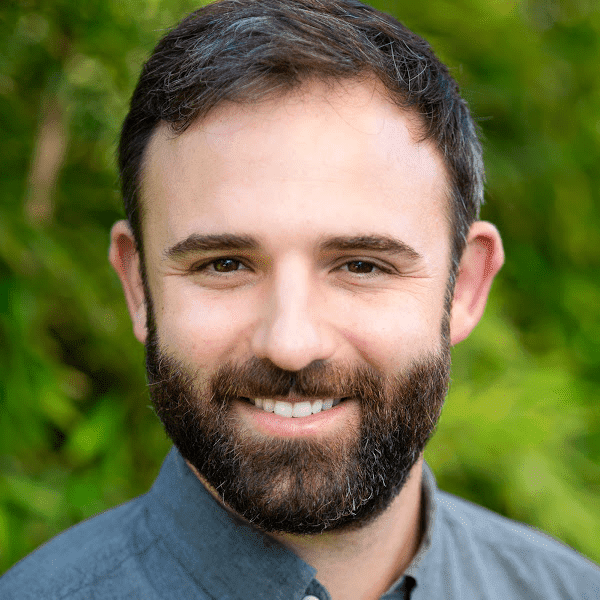
Ryan Babbush
Ryan is the director of the Quantum Algorithm & Applications Team at Google. The mandate of this research team is to develop new and more efficient quantum algorithms, discover and analyze new applications of quantum computers, build and open source tools for accelerating quantum algorithms research and compilation, and to design algorithmic experiments to execute on existing and future fault-tolerant quantum devices.
Authored Publications
Sort By
Google
Fast electronic structure quantum simulation by spectrum amplification
Guang Hao Low
Robbie King
Dominic Berry
Qiushi Han
Albert Eugene DePrince III
Alec White
Rolando Somma
arXiv:2502.15882 (2025)
Shadow Hamiltonian Simulation
Rolando Somma
Robbie King
Tom O'Brien
Nature Communications, 16 (2025), pp. 2690
Visualizing Dynamics of Charges and Strings in (2+1)D Lattice Gauge Theories
Tyler Cochran
Bernhard Jobst
Yuri Lensky
Gaurav Gyawali
Norhan Eassa
Melissa Will
Aaron Szasz
Dmitry Abanin
Rajeev Acharya
Laleh Beni
Trond Andersen
Markus Ansmann
Frank Arute
Kunal Arya
Abe Asfaw
Juan Atalaya
Brian Ballard
Alexandre Bourassa
Michael Broughton
David Browne
Brett Buchea
Bob Buckley
Tim Burger
Nicholas Bushnell
Anthony Cabrera
Juan Campero
Hung-Shen Chang
Jimmy Chen
Benjamin Chiaro
Jahan Claes
Agnetta Cleland
Josh Cogan
Roberto Collins
Paul Conner
William Courtney
Alex Crook
Ben Curtin
Sayan Das
Laura De Lorenzo
Agustin Di Paolo
Paul Donohoe
ILYA Drozdov
Andrew Dunsworth
Alec Eickbusch
Aviv Elbag
Mahmoud Elzouka
Vinicius Ferreira
Ebrahim Forati
Austin Fowler
Brooks Foxen
Suhas Ganjam
Robert Gasca
Élie Genois
William Giang
Dar Gilboa
Raja Gosula
Alejo Grajales Dau
Dietrich Graumann
Alex Greene
Steve Habegger
Monica Hansen
Sean Harrington
Paula Heu
Oscar Higgott
Jeremy Hilton
Robert Huang
Ashley Huff
Bill Huggins
Cody Jones
Chaitali Joshi
Pavol Juhas
Hui Kang
Amir Karamlou
Kostyantyn Kechedzhi
Trupti Khaire
Bryce Kobrin
Alexander Korotkov
Fedor Kostritsa
John Mark Kreikebaum
Vlad Kurilovich
Dave Landhuis
Tiano Lange-Dei
Brandon Langley
Kim Ming Lau
Justin Ledford
Kenny Lee
Loick Le Guevel
Wing Li
Alexander Lill
Will Livingston
Daniel Lundahl
Aaron Lunt
Sid Madhuk
Ashley Maloney
Salvatore Mandra
Leigh Martin
Orion Martin
Cameron Maxfield
Seneca Meeks
Anthony Megrant
Reza Molavi
Sebastian Molina
Shirin Montazeri
Ramis Movassagh
Charles Neill
Michael Newman
Murray Ich Nguyen
Chia Ni
Kris Ottosson
Alex Pizzuto
Rebecca Potter
Orion Pritchard
Ganesh Ramachandran
Matt Reagor
David Rhodes
Gabrielle Roberts
Kannan Sankaragomathi
Henry Schurkus
Mike Shearn
Aaron Shorter
Noah Shutty
Vladimir Shvarts
Vlad Sivak
Spencer Small
Clarke Smith
Sofia Springer
George Sterling
Jordan Suchard
Alex Sztein
Doug Thor
Mert Torunbalci
Abeer Vaishnav
Justin Vargas
Sergey Vdovichev
Guifre Vidal
Steven Waltman
Shannon Wang
Brayden Ware
Kristi Wong
Cheng Xing
Jamie Yao
Ping Yeh
Bicheng Ying
Juhwan Yoo
Grayson Young
Yaxing Zhang
Ningfeng Zhu
Yu Chen
Vadim Smelyanskiy
Adam Gammon-Smith
Frank Pollmann
Michael Knap
Nature, 642 (2025), 315–320
Quartic Quantum Speedups for Planted Inference Problems
Alexander Schmidhuber
Ryan O'Donnell
Physical Review X, 15 (2025), pp. 021077
Rapid Initial-State Preparation for the Quantum Simulation of Strongly Correlated Molecules
Dominic Berry
Yu Tong
Alec White
Tae In Kim
Lin Lin
Seunghoon Lee
Garnet Chan
PRX Quantum, 6 (2025), pp. 020327
Dynamics of magnetization at infinite temperature in a Heisenberg spin chain
Trond Andersen
Rhine Samajdar
Andre Petukhov
Jesse Hoke
Dmitry Abanin
ILYA Drozdov
Xiao Mi
Alexis Morvan
Charles Neill
Rajeev Acharya
Richard Ross Allen
Kyle Anderson
Markus Ansmann
Frank Arute
Kunal Arya
Abe Asfaw
Juan Atalaya
Gina Bortoli
Alexandre Bourassa
Leon Brill
Michael Broughton
Bob Buckley
Tim Burger
Nicholas Bushnell
Juan Campero
Hung-Shen Chang
Jimmy Chen
Benjamin Chiaro
Desmond Chik
Josh Cogan
Roberto Collins
Paul Conner
William Courtney
Alex Crook
Ben Curtin
Agustin Di Paolo
Andrew Dunsworth
Clint Earle
Lara Faoro
Edward Farhi
Reza Fatemi
Vinicius Ferreira
Ebrahim Forati
Austin Fowler
Brooks Foxen
Gonzalo Garcia
Élie Genois
William Giang
Dar Gilboa
Raja Gosula
Alejo Grajales Dau
Steve Habegger
Michael Hamilton
Monica Hansen
Sean Harrington
Paula Heu
Gordon Hill
Markus Hoffmann
Trent Huang
Ashley Huff
Bill Huggins
Sergei Isakov
Justin Iveland
Cody Jones
Pavol Juhas
Marika Kieferova
Alexei Kitaev
Andrey Klots
Alexander Korotkov
Fedor Kostritsa
John Mark Kreikebaum
Dave Landhuis
Pavel Laptev
Kim Ming Lau
Lily Laws
Joonho Lee
Kenny Lee
Yuri Lensky
Alexander Lill
Wayne Liu
Salvatore Mandra
Orion Martin
Steven Martin
Seneca Meeks
Amanda Mieszala
Shirin Montazeri
Ramis Movassagh
Wojtek Mruczkiewicz
Ani Nersisyan
Michael Newman
JiunHow Ng
Murray Ich Nguyen
Tom O'Brien
Seun Omonije
Alex Opremcak
Rebecca Potter
Leonid Pryadko
David Rhodes
Charles Rocque
Negar Saei
Kannan Sankaragomathi
Henry Schurkus
Christopher Schuster
Mike Shearn
Aaron Shorter
Noah Shutty
Vladimir Shvarts
Vlad Sivak
Jindra Skruzny
Clarke Smith
Rolando Somma
George Sterling
Doug Strain
Marco Szalay
Doug Thor
Alfredo Torres
Guifre Vidal
Cheng Xing
Jamie Yao
Ping Yeh
Juhwan Yoo
Grayson Young
Yaxing Zhang
Ningfeng Zhu
Jeremy Hilton
Anthony Megrant
Yu Chen
Vadim Smelyanskiy
Vedika Khemani
Sarang Gopalakrishnan
Tomaž Prosen
Science, 384 (2024), pp. 48-53
Optimization by Decoded Quantum Interferometry
Stephen Jordan
Noah Shutty
Mary Wootters
Alexander Schmidhuber
Robbie King
Sergei Isakov
arXiv:2408.08292 (2024)
Expressing and Analyzing Quantum Algorithms with Qualtran
Charles Yuan
Anurudh Peduri
arXiv::2409.04643 (2024)
